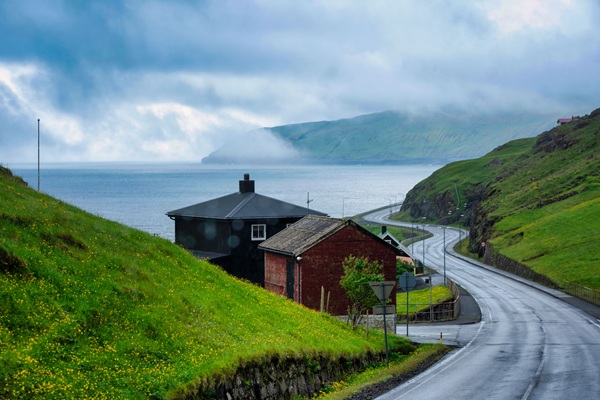Vacation in the Faroe Islands
Make the Most of Your Trip
We know there’s no better way to experience this incredible place than through the eyes of those who call it home. Our travel services are designed to give you a truly local experience—far beyond what typical tourism offers.
Self-drive tours are one of the best ways to explore the islands. You can travel at your own pace with your rental car, stopping whenever a scenic view catches your eye. We’ll provide local tips, hidden gems, and suggested routes that most visitors never hear about. Accommodation options are hand-picked and reflect the islands’ character—from cozy guesthouses run by Faroese families to modern hotels with stunning ocean views.
To make your trip even more special, we offer a variety of day tours led by locals who know the land, weather, and stories like the back of their hand. When you travel with us, you’re not just seeing the Faroe Islands—you’re connecting with the heart of our culture, nature, and way of life.
Comprehensive Faroe Islands Travel Solutions – Explore More with Us
At Nonni Travel, we bring the Faroe Islands to life with authentic, locally guided experiences and a wide range of travel services designed to create unforgettable memories. As Iceland’s trusted Destination Management Company (DMC), we specialize in crafting personalized journeys that reflect your unique interests—whether you’re traveling solo, with family, or in a group.
Our team combines local expertise with years of on-the-ground experience, offering everything from seamless ship handling and private guided tours to fully tailored multiday packages.
Below is a handpicked selection of travel options to make your time in the Faroe Islands smooth and rewarding. Whether you’re looking for a fully customized itinerary or a ready-to-book tour, we provide flexible solutions to suit every kind of traveler.
Let Nonni Travel take care of the details—so you can focus on experiencing the wild beauty, deep culture, and warm hospitality that make the Faroe Islands truly special.
Plan Your Stay in the Faroe Islands
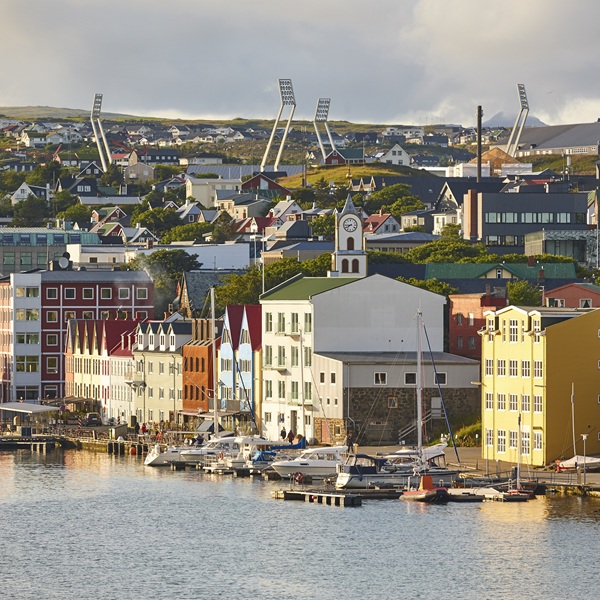
Tórshavn
Tórshavn, the capital of the Faroe Islands, is a small but vibrant city where tradition and modern life come together uniquely. Located on the island of Streymoy, Tórshavn is known for its colorful turf-roofed houses, narrow cobbled streets, and picturesque harbor that hums with local activity.
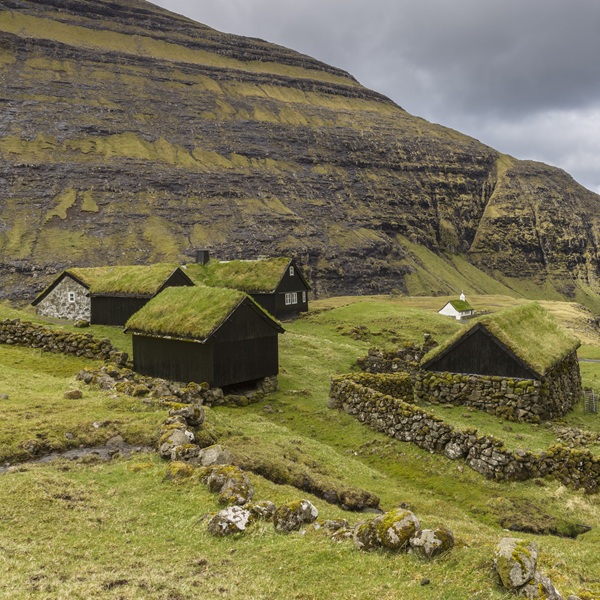
Streymoy
Streymoy is the largest and most populated island in the Faroe Islands, offering a captivating mix of dramatic landscapes and rich cultural heritage. Home to the capital city, Tórshavn, the island is the beating heart of Faroese life—where history, tradition, and modern living meet.
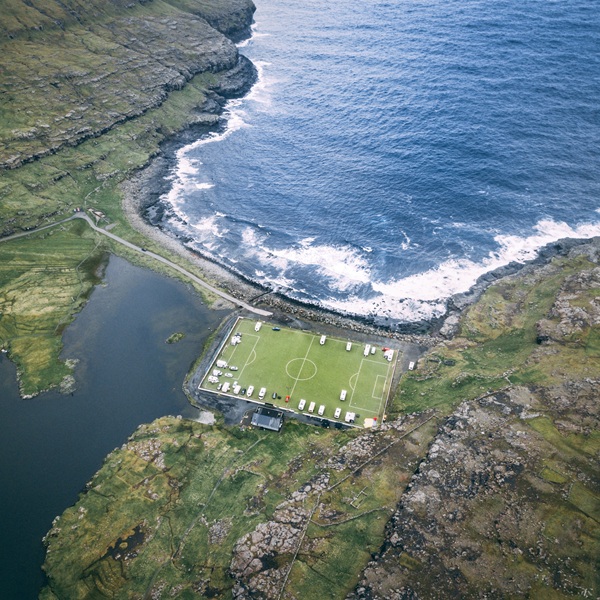
Eysturoy
Eysturoy, the second-largest island in the Faroe Islands, is where rugged beauty and rich heritage come together. Known for its sharp mountain peaks, winding fjords, and traditional villages, Eysturoy is home to some of the archipelago’s most striking landscapes—including Slættaratindur, the highest mountain in the Faroes.

Vágar
Vágar is one of the most scenic islands in the Faroe Islands, known for its stunning landscapes of rugged cliffs, tranquil lakes, and dramatic coastline. The island is home to the international airport of Vágar, providing easy access to the archipelago. Highlights include the picturesque village of Gásadalur, with its iconic waterfall, and Lake Sørvágsvatn, famous for its optical illusion of floating above the ocean.
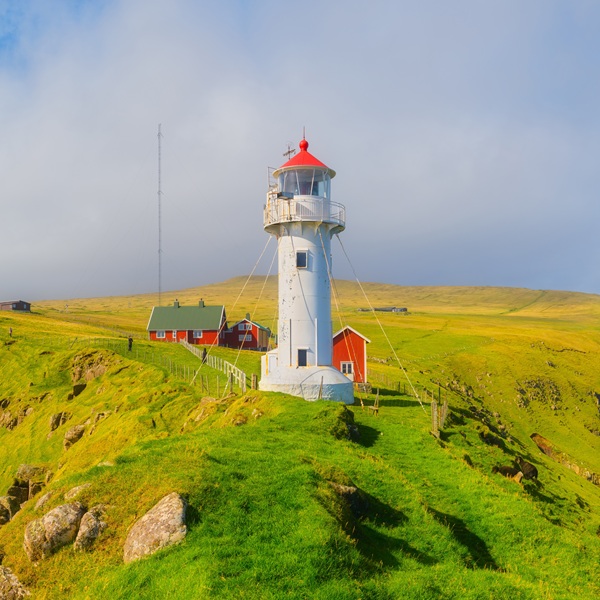
Suðuroy
Suðuroy is the southernmost island in the Faroe Islands. Known for its rugged cliffs, dramatic coastal scenery, and vibrant villages, the island features striking landscapes, from deep fjords to high cliffs and green valleys, offering excellent hiking opportunities and breathtaking views. Villages like Tvøroyri and Vágur reflect the island’s close-knit community and Faroese heritage.

Sandoy
Sandoy is a peaceful island known for its gentle hills, sandy shores, and small, quiet villages. The “Island of Sand” features beautiful landscapes with steep cliffs and vast meadows. The main village, Sandur, is where much of the local life happens, while smaller villages like Dalur and Skopun showcase the island’s traditional Faroese character.
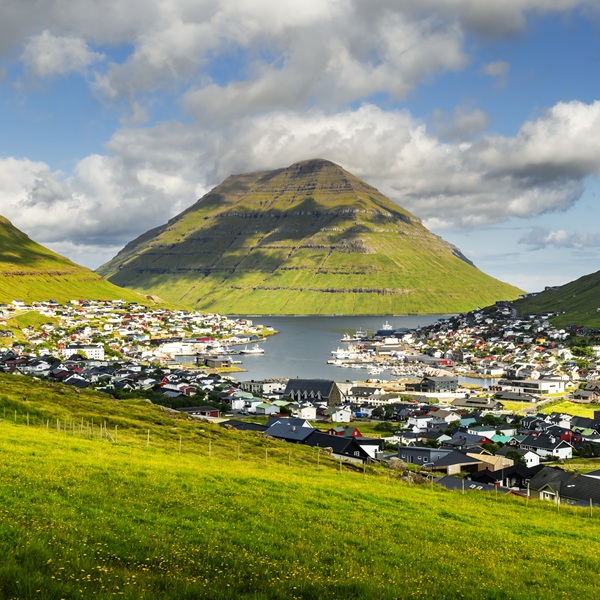
Borðoy
Borðoy is an island in the northern part of the Faroe Islands, known for its dramatic mountains, fjords, and picturesque villages. You will find there Klaksvík, the second-largest town in the Faroe Islands, which serves as a hub for fishing and local culture.
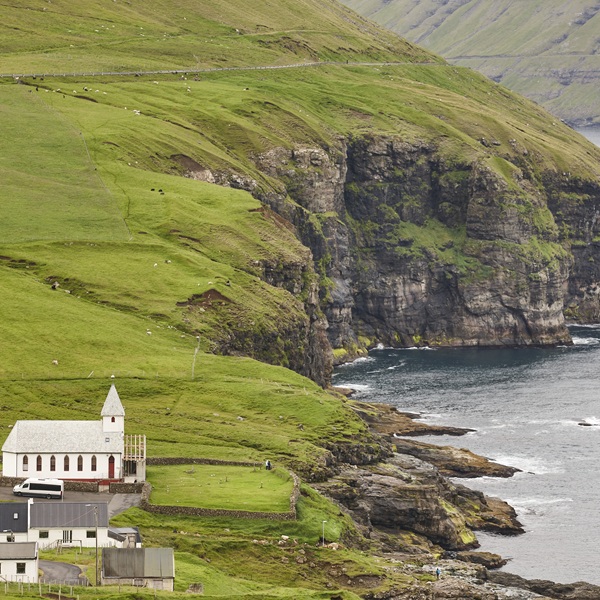
Viðoy
Viðoy is a northern island in the Faroe Islands, known for its steep mountains and deep fjords. Its highest peak, Villingardalsfjall, provides excellent hiking and expansive views. The village of Norðdepil is the main settlement where traditional Faroese culture thrives.
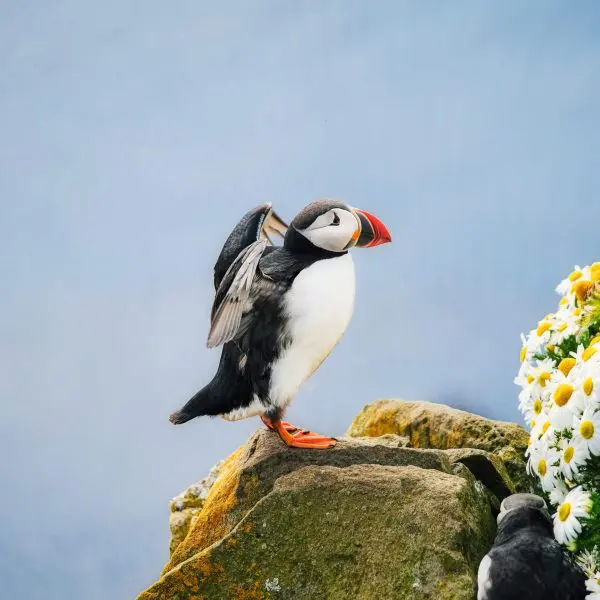
Fugloy
Fugloy is a quiet island in the Faroe Islands, known for its cliffs and hills along the coast. It’s one of the easternmost islands and offers ocean views and nearby islands. The island’s main settlement, Kirkja, is a small village with a close-knit community. Fugloy’s rugged terrain makes it a paradise for hikers and nature enthusiasts, with incredible birdwatching opportunities and abundant wildlife.
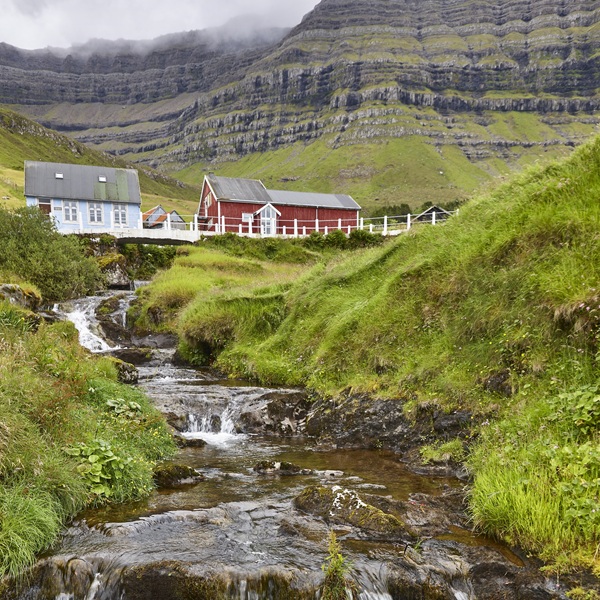
Kunoy
Kunoy is one of the northern islands in the Faroe Islands. The village of Kunoy sits by the shore and keeps traditional Faroese life alive. The island is a haven for hikers, with trails offering fantastic views. Also, Kunoy has few visitors, making it a good place for anyone wanting a peaceful, natural setting.
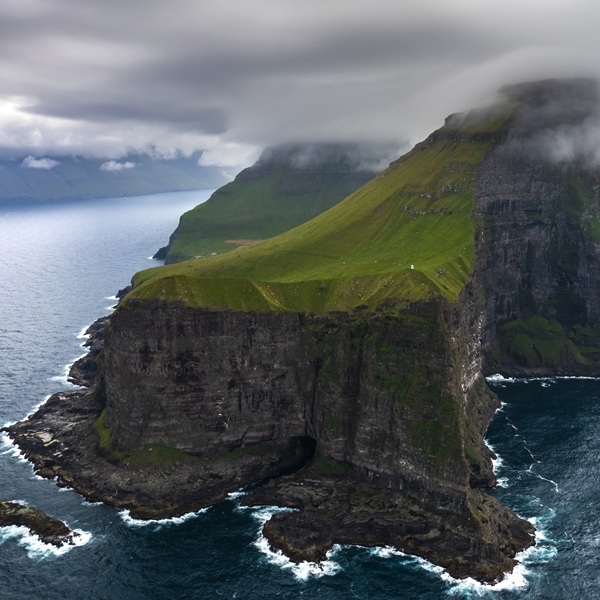
Kalsoy
Kalsoy is a narrow island known for its rugged terrain, cliffs, and picturesque landscapes. Often referred to as the “Kall” (meaning “man”), the island is famous for its distinct shape, with towering peaks and deep fjords. The village of Mikladalur is the main settlement, home to the iconic Kallur Lighthouse, perched on a cliff offering panoramic views of the surrounding ocean and islands.

Svínoy
Svínoy is a small, tranquil island located to the northeast of the archipelago. The island is sparsely populated, with the main settlement, Svínoy, offering a glimpse into traditional Faroese life and is also known for its historic lighthouse and rich maritime heritage. With its peaceful atmosphere and untouched beauty, Svínoy offers a quiet retreat for those seeking to experience the natural charm of the Faroe Islands.
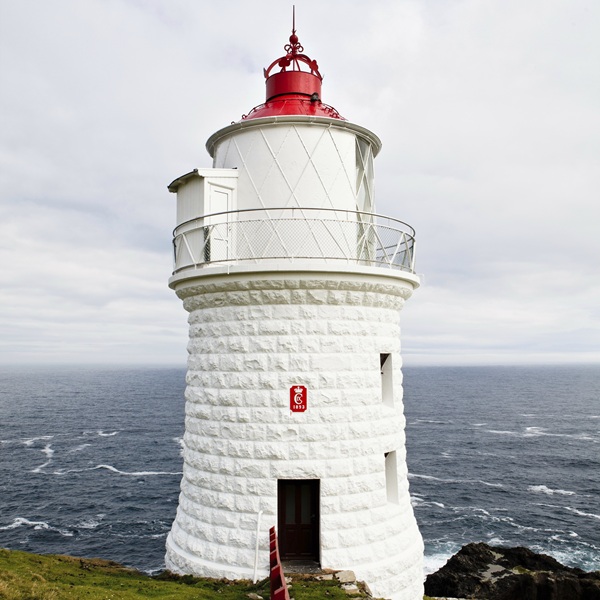
Nólsoy
Nólsoy is a small, charming island located just off the coast of Tórshavn. It is famous for its rich birdlife, particularly puffins, which nest on the cliffs during the summer. Nólsoy is ideal for hiking, with trails that lead to picturesque viewpoints and the iconic Nólsoy Lighthouse. Its proximity to Tórshavn makes it a perfect day-trip destination, offering a quiet escape with natural beauty and a traditional Faroese vibe.

Mykines
Mykines is one of the westernmost islands in the Faroe Islands. Known as a birdwatcher’s paradise, it’s home to thousands of puffins nest on its cliffs during the summer months. The island’s landscape is dotted with grassy hills, pristine beaches, and the iconic Mykines Lighthouse. The village of Mykines, a small but picturesque settlement, is the island’s central hub.

Skúvoy
Skúvoy is a small island in the southern Faroe Islands. It has steep cliffs, rolling hills, and a quiet feel. The island is popular with birdwatchers, especially for puffins. The village of Skúvoy has traditional Faroese houses. There are good hiking trails with views of nearby islands and the ocean. Its remote location makes it a peaceful place away from busy tourist spots.

Hestur
Hestur is a small island just south of Tórshavn in the Faroe Islands. Its shape is said to look like a horse. The island has cliffs, hills, and calm shores. Only one village, also called Hestur, is on the island. It’s popular for hiking, with paths that offer views of nearby islands and the ocean. Hestur is home to many seabirds. Close to the capital but quiet, the island is a peaceful spot to enjoy nature.

Stóra Dímun
Stóra Dímun is one of the smallest and most remote islands in the Faroe Islands. It lies in the southern part of the group and has only a few residents. Cliffs, deep valleys, and expansive ocean views mark the island. Its isolation makes it a good place for seabirds and wildlife. For hikers who want peace, the island offers a chance to enjoy nature away from crowds. Stóra Dímun is a quiet, untouched place in the Faroes.

Koltur
Koltur is a small, quiet island between Vágar and Streymoy in the Faroe Islands. It has green hills and cliffs, and few people live there, making it a peaceful place. The island has rolling hills, rocky areas, and views of the sea, which are suitable for hiking and birdwatching. There’s a small village, and the island is primarily tourism-free, keeping its traditional Faroese feel. Koltur is a calm place for anyone looking to enjoy nature and quiet.

Lítla Dímun
Lítla Dímun is a small and remote island in the Faroe Islands, located between Stóra Dímun and the southern islands. It has cliffs, green hills, and rugged coastline. The island has no people living on it—only some sheep graze there. It’s a quiet place with untouched nature. Hikers and nature lovers can enjoy views of the ocean and nearby islands.
Get in Touch with Us
Planning a trip to the Faroe Islands? Our local team is here to help. Whether you need support planning your route, finding the right place to stay, or choosing activities, we’re happy to assist.
You can also complete the travel plan form with your details and preferences. Once we receive it, we’ll review everything and reply with suggestions tailored to your plans.
Discover the Faroe Islands
A vacation in the Faroe Islands is unlike any other, offering a mix of striking landscapes, deep-rooted culture, and a sense of peaceful isolation. Set in the North Atlantic between Iceland and Norway, this remote group of 18 islands stands out for its raw beauty and strong local character. Each island has something unique, from steep mountains and narrow fjords to quiet villages and open fields.
Nature is at the heart of the Faroese experience. The islands are known for their towering cliffs, mist-covered hills, and green valleys that stretch toward the sea. One of the most photographed spots is Múlafossur Waterfall in Gásadalur, where water drops straight into the ocean, framed by dramatic cliffs. Whether walking ridge-top trails, exploring sea caves, or taking a boat through calm fjords, the scenery leaves a lasting impression.
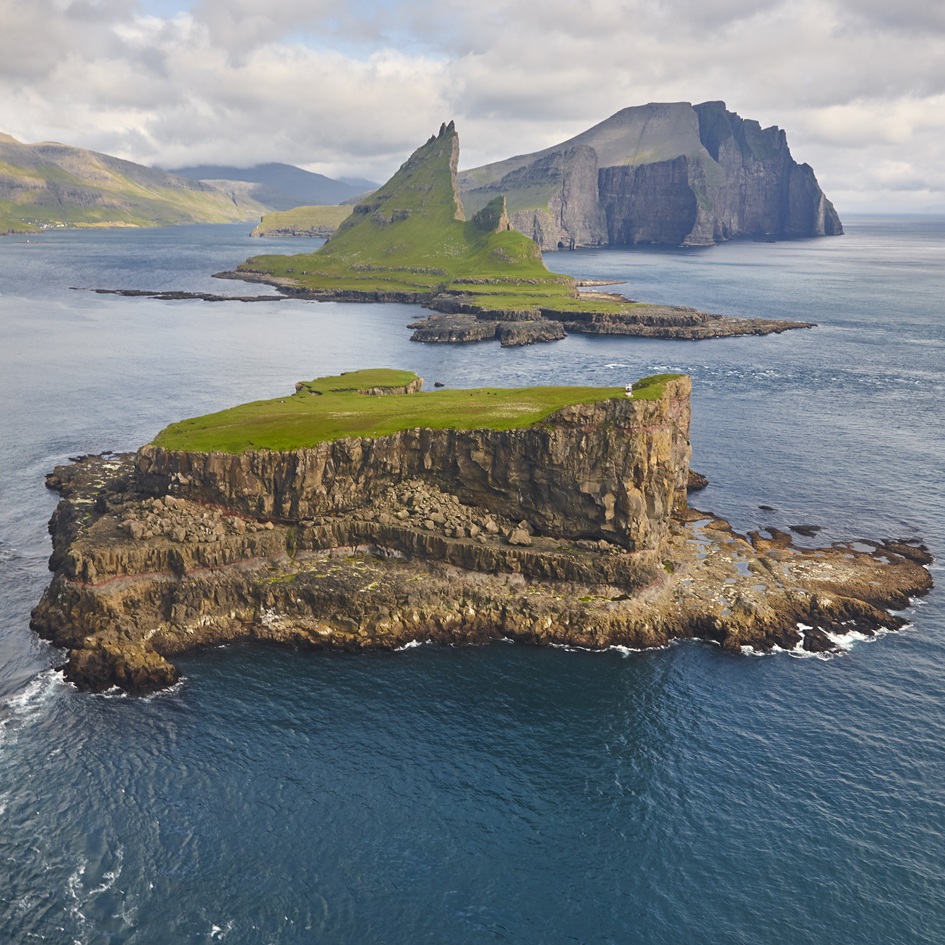
Birdlife is another highlight. The Faroe Islands are home to large colonies of seabirds, including puffins, guillemots, and kittiwakes. Mykines Island is especially popular with birdwatchers, offering close views of birds nesting on the cliffs. Farming is still part of everyday life, and visiting a local sheep farm gives insight into traditions that have shaped island life for centuries.
The islands’ cultural life is just as rich. Tórshavn, the capital, is one of the oldest in Europe. Its historic center, with grass-roofed houses and narrow lanes, is full of character. The city also has a growing arts scene, with exhibitions, music festivals, and cultural events throughout the year. The Faroese language, rooted in Old Norse, is still widely spoken and integral to local identity.
Food is another part of the story. Faroese meals are often based on what the land and sea provide—fresh fish, lamb, and traditional preserved dishes. In recent years, local chefs have gained recognition for their creative use of native ingredients, combining old methods with new ideas.
The weather can change quickly in the Faroe Islands. Sunshine, rain, fog, and wind often come and go within the same day. While unpredictable, this shift in conditions adds to the atmosphere and keeps the landscape dynamic and ever-changing.
The Faroe Islands offer a quiet, meaningful escape for those looking to slow down, explore untouched nature, and experience life far from busy city streets.
Most Common Questions About Vacation in the Faroe Islands
What is the best time to visit the Faroe Islands?
The best time to visit the Faroe Islands is between May and September, when the weather is mildest and the days are longest. June and July offer the most daylight and are ideal for hiking, birdwatching, and exploring the islands by boat.
How do I get to the Faroe Islands?
You can fly to the Faroe Islands via Vágar Airport (FAE), with direct flights from cities like Copenhagen, Edinburgh, Reykjavik, and Oslo. There is also a ferry connection from Denmark, operated by Smyril Line, which offers a scenic and relaxing option.
Do I need a visa to visit the Faroe Islands?
While part of the Kingdom of Denmark, the Faroe Islands have their visa policies. Travelers from the EU, EEA, and many other countries can enter visa-free for short stays. However, it’s essential to check the specific entry requirements before your trip.
What’s the weather like in the Faroe Islands?
The Faroe Islands have a maritime climate, which means the weather can change rapidly. Expect cool temperatures year-round, with average summer highs around 12–15°C (54–59°F). Pack for wind, rain, and sunshine all in one day!
What are the top things to do on a vacation in the Faroe Islands?
Popular activities include hiking in places like Saksun and Gásadalur, visiting Tórshavn, taking boat tours to sea cliffs and bird colonies, exploring remote villages, and enjoying local Faroese cuisine. Puffin spotting and waterfall hunting are also highlights.
Are the Faroe Islands good for hiking?
Yes, the Faroe Islands are a hiker’s paradise. There are countless trails across dramatic landscapes—clifftops, green valleys, and remote coastlines. Many routes are unmarked, so joining a local guided hike is a smart way to explore safely and respectfully.
Can I rent a car in the Faroe Islands?
Absolutely. Renting a car is one of the best ways to explore the islands. The road network is well-maintained, and several tunnels connect the main islands. Just be cautious on narrow roads and always give way to sheep!
Are the Faroe Islands expensive to visit?
Like many North Atlantic destinations, the Faroe Islands are relatively expensive. Accommodation, food, and transportation costs can add up. However, nature is free to explore, and the unique experiences more than justify the cost for most visitors.
Is English spoken in the Faroe Islands?
Yes, English is widely spoken, especially among younger Faroese and in tourism-related services. The official language is Faroese, and Danish is also commonly used, but you’ll have no trouble communicating in English.
Can you see puffins in the Faroe Islands?
The Faroe Islands are one of the best places in the world to see puffins during the summer months, particularly from May to early August. Head to islands like Mykines for some of the most accessible and abundant puffin colonies.
Are the Faroe Islands suitable for solo travelers?
Yes, the islands are very safe and welcoming for solo travelers. With its peaceful atmosphere, small-town charm, and strong sense of community, it’s a great place to enjoy solitude or meet the locals. Joining a guided tour is also a great way to connect with others.
What kind of food can I expect in the Faroe Islands?
Faroese cuisine features local lamb, fresh fish, root vegetables, and fermented specialties. You’ll also find modern Nordic dining in Tórshavn, with restaurants like Koks (Michelin-starred) offering world-class tasting menus focused on local ingredients.
How many days should I spend in the Faroe Islands?
For a relaxed and meaningful experience, plan on 5 to 7 days. That gives you time to explore multiple islands, take a few hikes, enjoy a boat tour, and discover both nature and culture without rushing.
Do I need to worry about safety in the Faroe Islands?
Not at all. The Faroe Islands are incredibly safe, with very low crime rates. The main thing to be mindful of is nature—weather can change rapidly, and some hiking paths are steep or remote. Always check forecasts and let someone know your plans.

